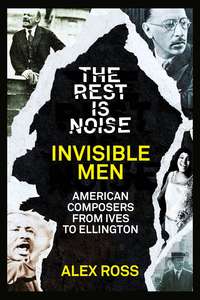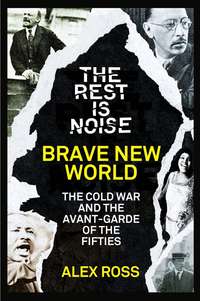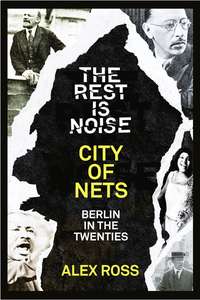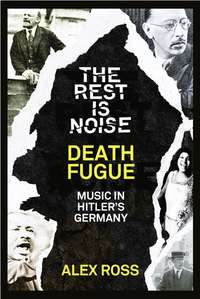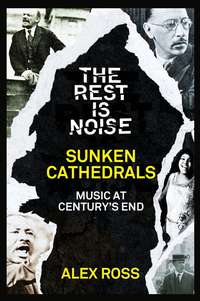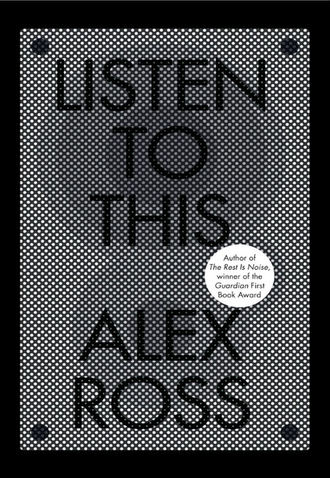
Полная версия
Listen to This
The Don’s almost existential fate, his crucifixion without resurrection, is a singular event in Mozart’s world. Most of his operas end in a great scene of reconciliation, in keeping with Enlightenment ideals. In Figaro, the Countess pardons the Count; in Idomeneo, Neptune’s oracle, in whose music Leopold Mozart took such an interest, proclaims the power of love; in The Abduction from the Seraglio, Pasha Selim forgives his enemy’s son; and in The Magic Flute and La clemenza di Tito, both Sarastro and the Emperor rise above vengeance. (Così fan tutte is the other problem case; its reuniting of lovers is troubled by the fact that Fiordiligi has expressed high passion for the wrong man.) Jessica Waldoff, in her 2006 study Recognition in Mozart’s Operas, connects these scenes to Aristotle’s concept of anagnorisis, or recognition, the “change from ignorance to knowledge.” In Don Giovanni, Waldoff points out, the moment of recognition is withheld: the Don remains “unflinching, unreflecting.” That is why the Romantics revered him: he does not stray from the extreme path that he has chosen. He is more Faustian than Goethe’s Faust—who does, in the end, repent.
A final twist awaits. In a cosmically laughing epilogue, the remaining principals gather to proclaim, in bouncy, up-tempo music, that evildoers always meet the same bad end. The Romantics had such difficulty accepting this seeming anticlimax that they routinely cut it from the opera. Richard Strauss was one of the first to recognize its ironic intelligence, and to restore it in performance. The scholars Philip Kitcher and Richard Schacht write that the ending imagines “life without awe,” a truly human existence beginning on the other side of tragedy. The world may be a duller place without the Don and his occult nemesis, but it is still suffused with Mozartian bliss. We can live without extremists, however much they may stimulate our faculties of lust and rage.
Don Giovanni, which is many people’s choice for the greatest opera ever written, ends with something like a humble gesture: it dissolves its own aura of greatness. Having marched us to the brink of heaven and hell, Mozart abruptly pulls us back, implying that, in the manner of Shakespeare’s epilogues, all is show, a pageant melting into air. “I’m just the composer, I don’t have any answers,” he seems to say. “Life goes on!” And he walks away at a rapid pace, his red coat flapping behind him.
5 ORBITING RADIOHEAD’S GRAND TOUR
On a hot day in May 2001, the city of Bilbao was shaken by a velvety roar, not unlike the sound of a jet plane waiting on a tarmac. At one end of Calle de Iparraguirre, which cuts across the town, the silver shell of Frank Gehry’s Guggenheim Museum was glistening in the sun. For a moment, it seemed as if the noise were coming from there—as if the building were about to lift off and rocket elsewhere. In fact, the source of the disturbance was a local bullring, the Vista Alegre, where a German experimental DJ named Christoph de Babalon was testing his gear. He was the opening act for Radiohead, a five-man British group that had the reputation of being the most artistically formidable rock band since the Beatles. Radiohead fans were gathered at the entrance, staring up at the sound and asking what it meant. One had on a Kafka T-shirt, and others wore shirts with a Radiohead logo, which can only be described as a demon in tears.
A side door led to a concrete corridor, where the bulls run on an ordinary day. From there, planks reached out to a temporary stage. Christoph was in the center, eyeing his mixer and his CD players. With ice-blond hair and black sunglasses, he looked like a young Bond villain, but he turned out to be a friendly, chatty sort of sonic terrorist. “I am familiar with dark, small clubs,” he said after the sound check. “Now it is like I am in a gladiator film.” He mentioned some of his musical influences, which included avant-garde figures like Merzbow and the composer Morton Feldman. “Sometimes I work with beats, sometimes with layers,” he said. “Tonight I do layers.”
Christoph went to his dressing room, and the stage was empty for a while. Two shirtless old men sat on stone steps, looking as though they had not moved since Franco died. Radiohead’s gear basked in the sun. On the left-hand side was a rack of guitars—twenty-three in all. Up front, in an area set aside for Ed O’Brien, one of three guitarists in the band, was a tangle of pedals, samplers, and inch-thick cords. In the center of the stage, to be shared by Colin Greenwood, the bass player, and Thom Yorke, the singer, were various keyboards, a piano, and an upright bass. Equipment for Colin’s younger brother, Jonny Greenwood, stood on the right: more guitars, more keyboards, a xylophone, a transistor radio, a sci-fi stack of analog synthesizers, and a modified ondes Martenot, one of the earliest electronic instruments. The ondes Martenot is controlled by a ring that slides along a wire; fewer than a hundred people have mastered it, and Jonny is one. The only really conventional-looking apparatus was the drum set, although you could tell by some distress on the edges of the drums that the player, Phil Selway, had attacked the sides as well as the skins.
Backstage, the members of Radiohead were eating dinner. Colin Greenwood hovered over the catering table, inspecting an array of Basque dishes. He is typical of the group in that he looks nothing like a celebrity who has sold fifteen million records. He is a pale, slender man with jet-black hair and large, kindly eyes. He is easily distracted and delighted by the world around him, favoring the words “mad,” “brilliant,” and “amazing”—the last spoken with a long, liquid stress on the second syllable. He has a habit of suddenly burying his face in his hands, as if he were sinking into despair or falling asleep; after a moment, his face lights up again. Lavishly well-read, he can talk at length about almost any topic under the sun—Belgian fashion, the stories of John Cheever, the effect of different types of charcoal on barbecued meat—but he gets embarrassed by his erudition and cuts himself off by saying, “I’m rambling.” He is not above wearing a T-shirt that says “Life’s a beach and then you shag.” You might peg him as a cultish young neo-Marxist professor, or as the editor of a hip quarterly. But he is a rock star, with several Web pages devoted to him.
“It’s full on out there, isn’t it?” Greenwood said, looking toward the bullring, which was filling up with fans. “I’m scared.” He occupied himself by talking about Faust’s Metropolis, Alexandra Richie’s thousand-page history of Berlin. Outside, Christoph began to play for real, and was received in bemused silence.
An hour later, Radiohead hit the stage with a confidence that had been invisible before the show. The sound was huge, but it was awash in colors, contrasts, and detail. It was grand in effect, cool in tone, dark in mood. The set combined music from the band’s breakthrough albums of the mid-nineties—The Bends and OK Computer—with more recent material from the albums Kid A and Amnesiac. The older songs had choruses that the fans knew by heart, but the newer ones, which some rock critics had described as “anticommercial,” made the crowd dance harder. (In a demolition of conventional wisdom, Kid A, a hypnotic blend of rock riffs, jazz chords, classical textures, and electronic noise, had gone to the top of the Billboard chart the previous year.) “Idioteque” set off fierce rhythmic clapping, even though it was dominated by jagged beats, computer-music samples, and squawks from the analog synths. It must have helped that the singer, when he was done singing, launched into a demonically silly dance, kicking his legs as if someone were firing a gun at his feet. It may also have helped, on an unconscious level, that love-drunk chords from Tristan und Isolde lurked at the heart of the song, courtesy of Paul Lansky’s 1973 computer composition mild und leise.
In the middle of the set, Radiohead played a song called “Airbag,” which typifies the band’s crafty balance of art and pop. Jonny started off with a melody that snaked along in uneven time—one-two-three-one-two-three-one-two—and swayed between A major and F major. O’Brien added leaner, brighter curlicues on guitar. Selway came in with a precise but heavily syncopated beat. Then Yorke began to sing, in a well-schooled, plaintive voice, an oblique account of a near-fatal collision: “In the next world war / In a jackknifed juggernaut / I am born again.” At the mention of war, Colin let loose a jumpy bass line, giving a funky spin to the hymns in the treble. The music cut through a jumble of verses and choruses, then held fast to a single chord, as Yorke fell into sync with O’Brien’s chiming lines. Just before the end, Colin grinned, leaped in the air a couple of times, and seized hold of his brother’s tune, the one that had set the song in motion. The doubling of the theme, a very Led Zeppelin move, had thunderous logic, as if an equation had been solved. The interplay was as engaging to the mind as anything that had been done in classical music recently, but you could jump up and down to it.
In the old days, rock bands had a haircut, a lingo, a house style. The disconcerting thing about Radiohead is that its members aren’t much alike.They have in common the fact that they were born between 1967 and 1971, and that they grew up in Oxfordshire, England, where most of them still live, but beyond that their personalities diverge. Yorke, who writes most of the songs, is compact, boyish, and impish; he has a lethally quick mind and a subtly potent charisma. O’Brien, almost a foot taller than Yorke, has the jutting jaw and floppy bangs of an actor in a period war movie; he is suave and direct and seems to have rolled in from a different posse. Jonny Greenwood, a lanky figure with unruly black hair, is more cautious than his brother, Colin, but when he starts talking he excitedly involves himself in dense, Victorian sentences, biting clauses out of the air. Phil Selway, the oldest, is bald and sweet-faced, and talks in a gentle voice. He looks like the nice, ordinary one, but he often has a trace of a wicked smile.
How these five quirky Englishmen became the Knights Templar of rock and roll—the most closely analyzed, fervently admired, hotly debated, and slavishly imitated band of the modern era—is anyone’s guess. They are not too sure themselves. “Everyone comes to us with their heads bowed, expecting to be inducted into the mystery of Radiohead,” Selway said. He made a King Tut gesture with his arms. “We were hoist on our own petard with that. At a certain point, around 1997, we were simply overwhelmed and had to vanish for a bit. This was our honest reaction to the situation we were in. But some people thought we were playing a game, or had started taking ourselves too seriously. Really, we don’t want people twiddling their goatees over our stuff. What we do is pure escapism.”
What happened to Radiohead in 1997 was that they caught a wave of generational anxiety. The album OK Computer, with titles like “Paranoid Android,” “Karma Police,” and “Climbing Up the Walls,” pictured the onslaught of the information age and a young person’s panicky embrace of it. Yorke’s lyrics seemed a mixture of overheard conversations, techno-speak, and fragments of a harsh diary. The songs offered images of riot police at political rallies, anguished lives in tidy suburbs, yuppies freaking out, sympathetic aliens gliding overhead. In “Let Down,” Yorke even dared to describe the feeling of disappointment that follows a blast of hype, such as the one his band was producing. The album sold more than four million copies worldwide, enabling the group to become, by 1999, an independent operation. Radiohead were the poster boys for a certain kind of knowing alienation—as Talking Heads and R.E.M. had been before.
Radiohead remain a magnet for misfits everywhere, but their outsider status is only a part of their appeal. What fans seem to like, even more than the content of the songs, is the sense that the band members have labored over every aspect of the product. They are skilled, first of all, at inventing the kinds of riddles that people enjoy unraveling. The records, the videos, the official website, even the T-shirts all cry out for interpretation. Why are words spelled funny? What are all these charts and diagrams? What about the grinning bears and crying Minotaurs? “We liked worrying over that kind of thing when we were kids, and we’re still in the same mind-set a lot of the time,” Selway said. “But it’s a bit incidental. We’re dead set on the music. That’s the thread running through this whole thing. We met at school playing music together, and we still get together over music now. We like solving musical puzzles. That’s what Thom gives us.”
A Radiohead song is usually written in three stages. First, Yorke comes up with a rough sketch; then, Jonny, who studied composition briefly at Oxford Brookes University, fleshes out the harmony; finally, the others digest it for a while, working out their parts on their own. It can be months, even years, before a song comes together in a way that satisfies all of them. Take away any one element—Selway’s flickering rhythmic grid, for example, crisp in execution and trippy in effect—and Radiohead is a different band. The five together form a single mind, with its own habits and tics—the Radiohead Composer. This personality can be glimpsed in the daily bustle of the group, but you can never meet it face-to-face, because it lives in the music. A lot of what has been written about Radiohead—there are a dozen books, hundreds of magazine articles, and millions of words on the Internet—circles around an absent center.
Конец ознакомительного фрагмента.
Текст предоставлен ООО «ЛитРес».
Прочитайте эту книгу целиком, купив полную легальную версию на ЛитРес.
Безопасно оплатить книгу можно банковской картой Visa, MasterCard, Maestro, со счета мобильного телефона, с платежного терминала, в салоне МТС или Связной, через PayPal, WebMoney, Яндекс.Деньги, QIWI Кошелек, бонусными картами или другим удобным Вам способом.




